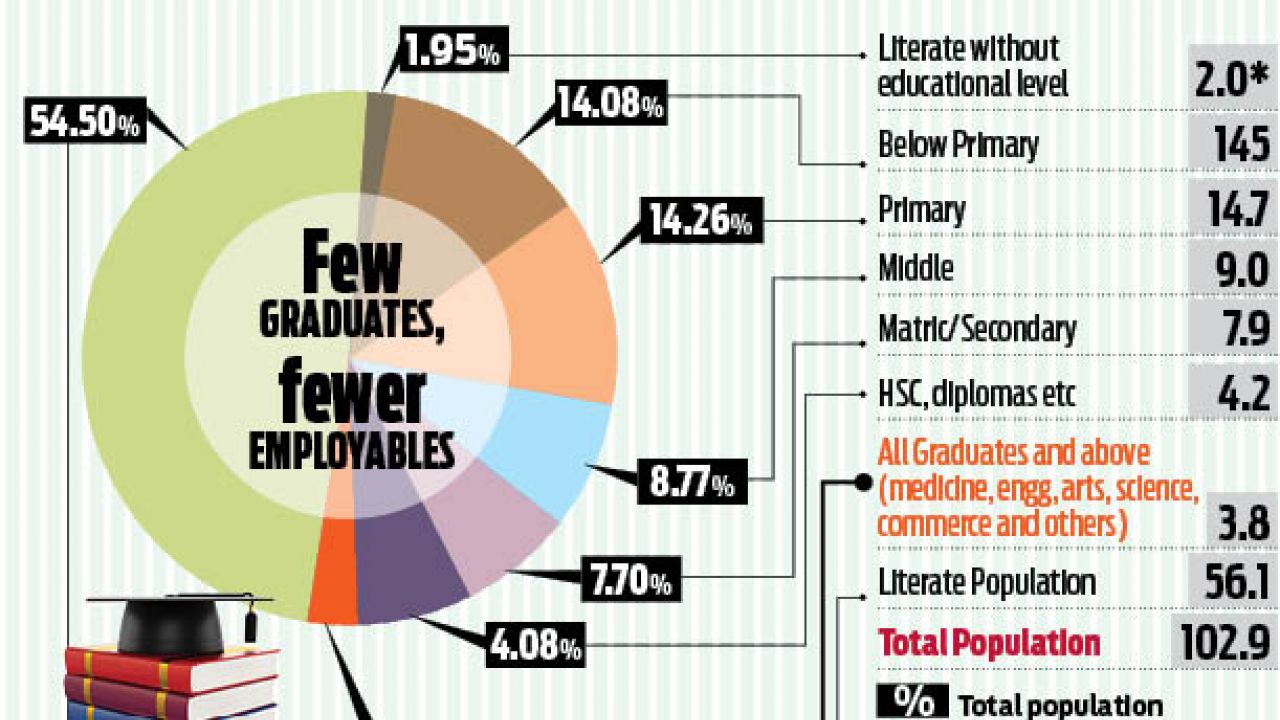
Last fortnight a little known Jombay, a talent assessment and analytics platform, hit media headlines. It claimed that a significant percentage of students from top business schools in India score below industry standards in terms of sales acumen and customer focus. The schools surveyed were Indian School of Business (ISB) Hyderabad, IIM Ahmedabad, IIM Kolkata, IIM Lucknow and IIM Bangalore among others.
The source of this survey may not have been well known, but its findings did not surprise anyone. Experts in the field of academics have watched with alarm the government’s increasing penchant for interfering with the manner in which business schools admit students. The State has also tried, at times, to regulate the manner in which teachers are recruited and paid. None of this bodes well for world class academics.
Competitive populism
There is another cause for worry. State governments too have been playing competitive populism. They have allowed the academic filters at the school level to get dismantled and become dysfunctional. The Right to Education (RTE) Act (the brainchild of Kapil Sibal, the former Union Minister for education and human resource development) accelerated this malaise (http://www.dnaindia.com/money/report-policy-watch-stress-on-numbers-rather-than-quality-makes-education-outlays-flawed-1946086).
Not surprisingly, standards of education at the school level have plummeted. As a result, more students get ‘pass’ marks at secondary (SSC) and higher secondary (HSC) examinations than warranted. Unwilling to detain too many students at higher levels of learning, the system now produces more sub-standard graduates than ever before.

The unemployables
Consider the findings of organisations like Nasscom, TCS and McKinsey, all of which have claimed that only 15%-30% of the graduates in India are employable. This problem was evident as early as the 1970s. Once again, the pace has accelerated.
Also, look at the number of graduates that exist in the country, and the money the government spends on “higher education” (see chart).
Figures gleaned from the Census 2001 (comparative figures could not be gleaned from Census 2011) show that the cumulative pool of graduates (arts, science, commerce, engineering, medicine and others) account for not more than 3.6% of the Indian population. That by itself is alarming, because the number is far too small for the needs of a country as vast and varied as India.
But, if one then discounts graduates that are just not employable, one arrives at a figure of just 1.08% of the population. Clearly, when a country’s services sector (including administration) is being managed by just 1.08% of the population, you run the risk of these “employable-graduates” being swamped by people who do not want to be pushed aside. This is the biggest danger for India. It is like having barbarians at the gate. They could go on a rampage and destroy much of what is good in the country.
Unless the remaining 98.92% is quickly ‘upgraded’ in terms of literacy and skills, there is the bigger danger of even the good institutions of learning being ‘downgraded’ by administrative measures. Sadly, many of these measures are dictated by elected representatives who do not value higher learning.
This is precisely what seems to have happened with India’s institutes of learning. None of the institutions rank among the best in the world. Even the IITs have slipped in global ranking. And universities like the Benares Hindu University (BHU) which once boasted of the best scholars in the country, are not even in the reckoning any more.
Some of this malaise is on account of the decimation of cultural ownership of community-owned institutions (http://www.dnaindia.com/money/1876444/report-policy-watch-govt-control-not-the-best-way-tomanage-temple-trusts). Hopefully, the recent judgement from the Supreme Court, defending the right of cultures to manage their own institutions could redeem this situation over the next decade or so (http://www.dnaindia.com/money/column-policy-watch-how-sc-upheld-community-s-right-to-manage-funds-1953862).
Focus on schools, not IITs
The other issue is the desperate need to improve school education. Take the latest ASER (Annual Status of Education Report). It shows that the proportion of class 5 students who can read a class 2 text has declined 15 percentage points since 2005. The proportion of class 8 students who can do division has fallen 23 percentage points. This is not a new discovery. It was much in evidence as early as in 2002 (http://www.dnaindia.com/analysis/1836961/report-poor-school-education-could-destroy-india). Only the pace of decay has quickened.
Hitherto, good school education has been possible either for the rich or those from ‘upwardly mobile’ families (http://www.dnaindia.com/money/report-policy-watch-education-system-promotes-non-inclusive-growth-1939390). It is critical that good school education reaches out to the poor; but without sacrificing academic standards. Remember, the biggest leveller of inequality is good quality school education.
Some of the funds for school education could easily be got by reducing the grants for higher education. The 70% unemployable graduates translate into Rs11,830 crore squandered each year (the allocation for the Department of Higher Education was Rs16,900 crore in the Budget for 2014-15).
What India, therefore, needs is not more IITs, but better schools. And school education can be improved only if the academic filters are restored on the one hand (http://www.dnaindia.com/money/report-policy-watch-stress-on-numbers-rather-than-quality-makes-education-outlays-flawed-1946086), and teachers paid better for outcome-based performance on the other.
By focusing on better standards at school, you will have less of sub-standard students getting into college, thereby improving both the teaching and the outcomes at college as well. Moreover, as any academician will tell you, no amount of good college education can cope with the damage bad schooling can cause for 10 years. The rot must be stemmed at the school level itself. Hope India’s new policymakers understand how serious the situation is.
The author is a consulting editor with dna